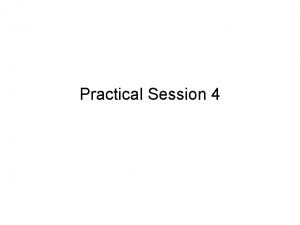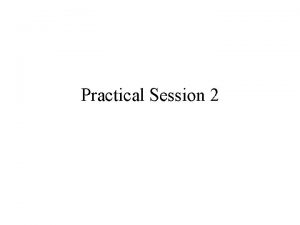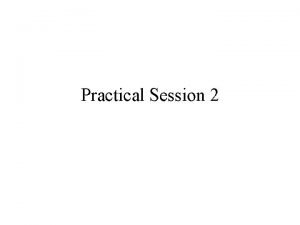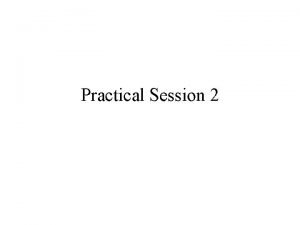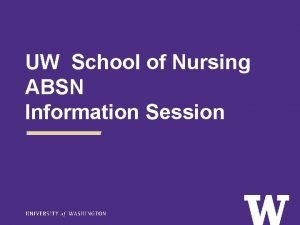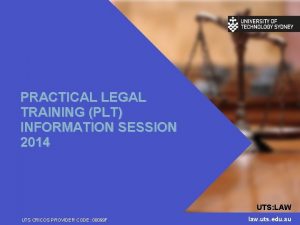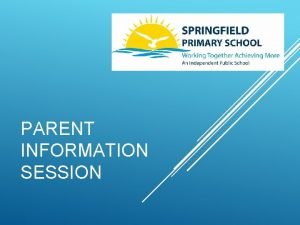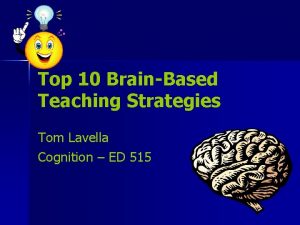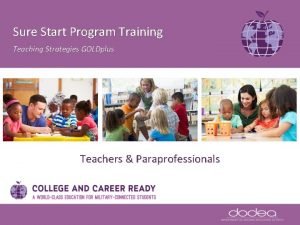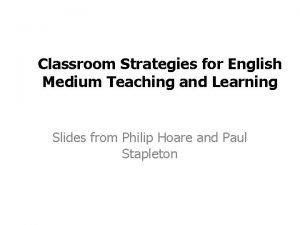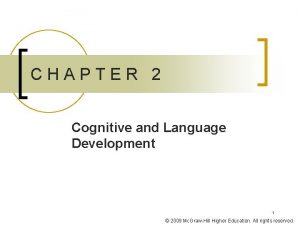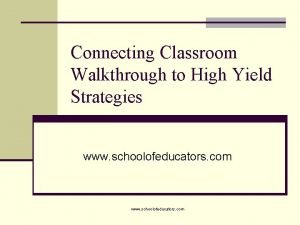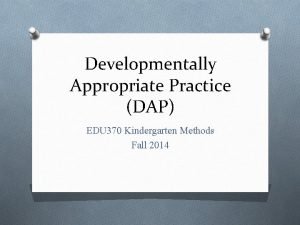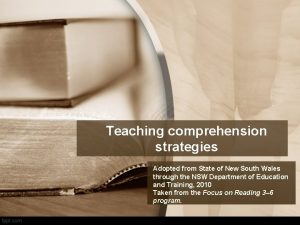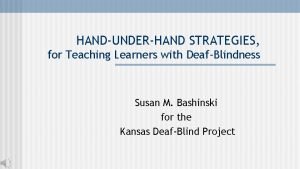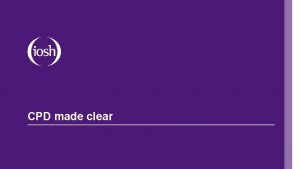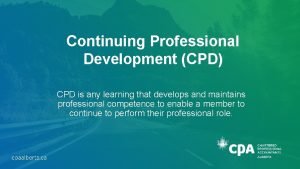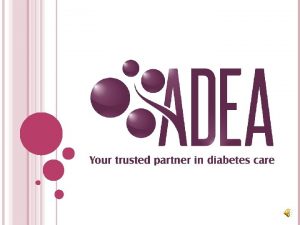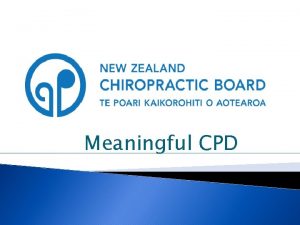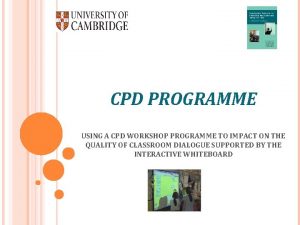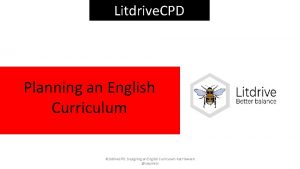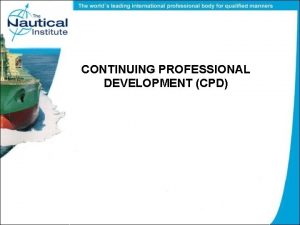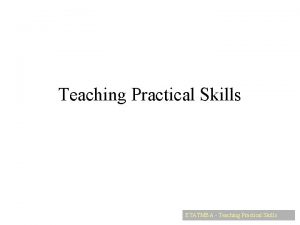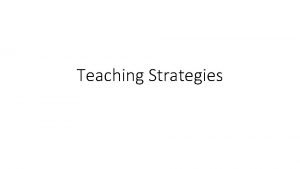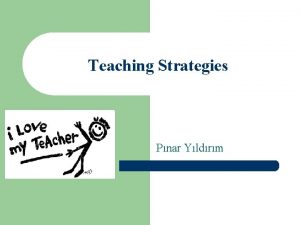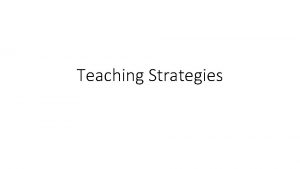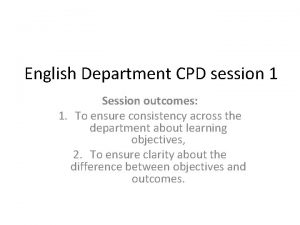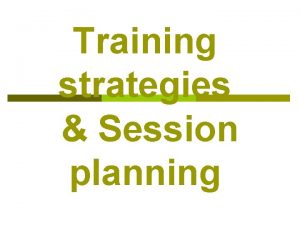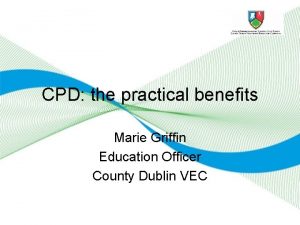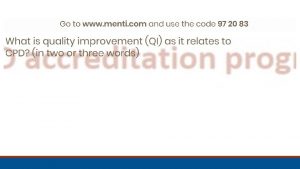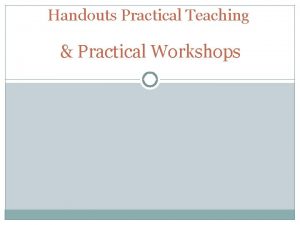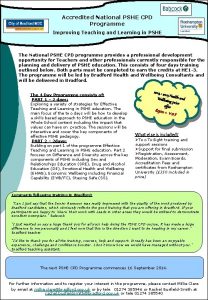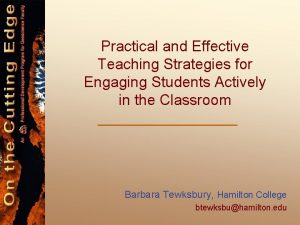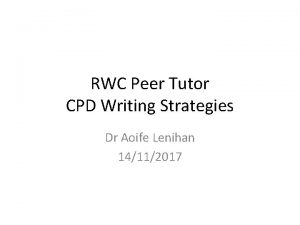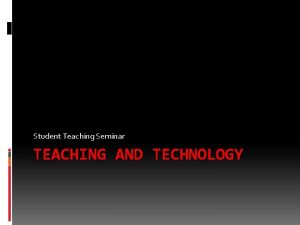CPD session Practical Strategies for Teaching Information and





























- Slides: 29

CPD session Practical Strategies for Teaching Information and Media literacy

Who We Are Helen Blachford Head of Humanities Priory School, Southsea Bryden Joy Head of Life Studies Perins School, Alresford

Our involvement in Media Literacy • ACT Ambassadors for South East England • USA teacher exchange in April 2019 • 10 days in Washington, NYC, Boston • met with leading experts • wanted to start to implement in England 3




Our involvement in Media Literacy • ACT Ambassadors for South East England • USA teacher exchange in April 2019 • 10 days in Washington, NYC, Boston • met with leading experts • wanted to start to implement in England • Developing lessons for use in schools 7

Task • Can you define these key words? disinformation malinformation that is deliberately created to harm a person, social group or organisation information which is false, but not created with the intention of causing harm truthful information which is shared to deliberately harm a person or group 8



Media Consumption 11

12

13

REVIEW: Reputation • Who is the source of the published content? • Have you heard of this person or outlet before? • Have they previously been reliable? • What is their area of expertise, if any?

REVIEW: Evidence • Distinguish between examples of fact and opinion • Think about how the facts may have been curated • Undertake lateral reading to read around the issue • Consider if holes in the story are emerging 15

BBC, 5 May 2020

IMVAIN model from Stony Brook University Center for News Literacy 17

REVIEW: Verify • Test the article using the IMVAIN criteria • Check fact-checking websites like Full. Fact or Snopes to see if the story has been verified • Try to find the same story reported in other outlets • Investigate pieces of evidence, e. g. names or dates • Research if images or videos are elsewhere online using Google Reverse Image Search or Tin. Eye

Know Your Neighbourhood 19

REVIEW: Intent 20


Task 22

Bias and Intent 23

REVIEW: Emotions 24

25 Plutchik’s Wheel of Emotions Image source: copypress. com

Task 26

Task Reactions of: • Conservative voter • Labour voter • NHS employee 27

REVIEW: Weigh it Up • Is the source reputable? • Is the evidence in the article accurate? • Is this a news piece or an opinion piece? • Has it been written to trigger your emotions? • Does everything check out? • Do you want to share it or not?

Any questions?
 Factor label definition
Factor label definition Multipicand
Multipicand Practical session definition
Practical session definition Practical session meaning
Practical session meaning Practical strategies to prevent bullying
Practical strategies to prevent bullying Microteaching meaning
Microteaching meaning Anna easter brown
Anna easter brown Absn uw
Absn uw Uts plt
Uts plt Wharton information session
Wharton information session Parent information session
Parent information session Top 10 brain-based teaching strategies
Top 10 brain-based teaching strategies Teaching strategies gold app
Teaching strategies gold app Emi teaching strategies
Emi teaching strategies Piaget teaching strategies
Piaget teaching strategies Remedial teaching meaning
Remedial teaching meaning Marzano's high yield strategies
Marzano's high yield strategies Developmentally appropriate practice for kindergarten
Developmentally appropriate practice for kindergarten Teaching comprehension strategies nsw
Teaching comprehension strategies nsw Deaf-blindness teaching strategies
Deaf-blindness teaching strategies Ethics and professional responsibility cpd
Ethics and professional responsibility cpd Kontinuitetshantering
Kontinuitetshantering Novell typiska drag
Novell typiska drag Tack för att ni lyssnade bild
Tack för att ni lyssnade bild Ekologiskt fotavtryck
Ekologiskt fotavtryck Varför kallas perioden 1918-1939 för mellankrigstiden?
Varför kallas perioden 1918-1939 för mellankrigstiden? En lathund för arbete med kontinuitetshantering
En lathund för arbete med kontinuitetshantering Personalliggare bygg undantag
Personalliggare bygg undantag Tidbok för yrkesförare
Tidbok för yrkesförare Sura för anatom
Sura för anatom
